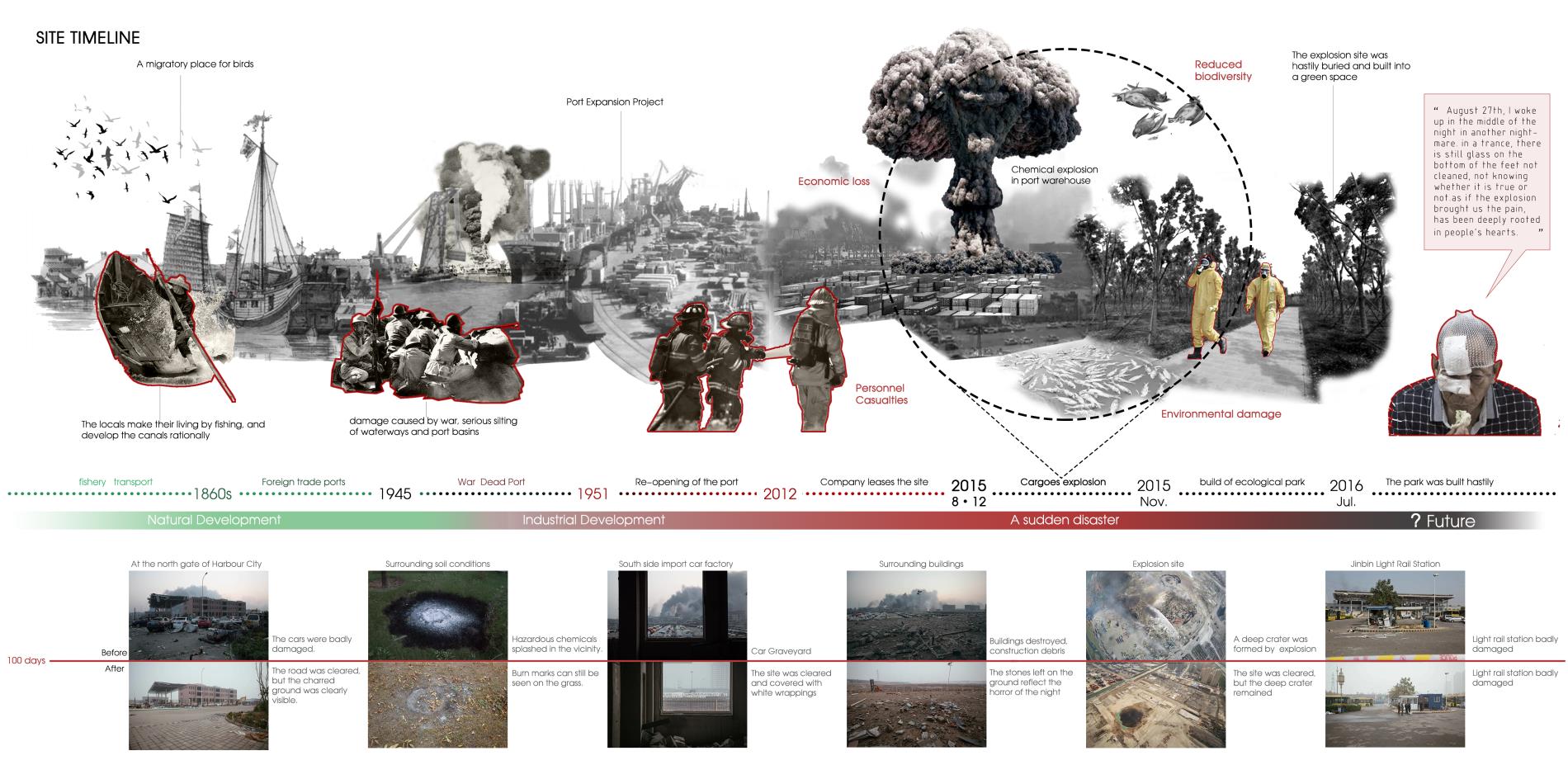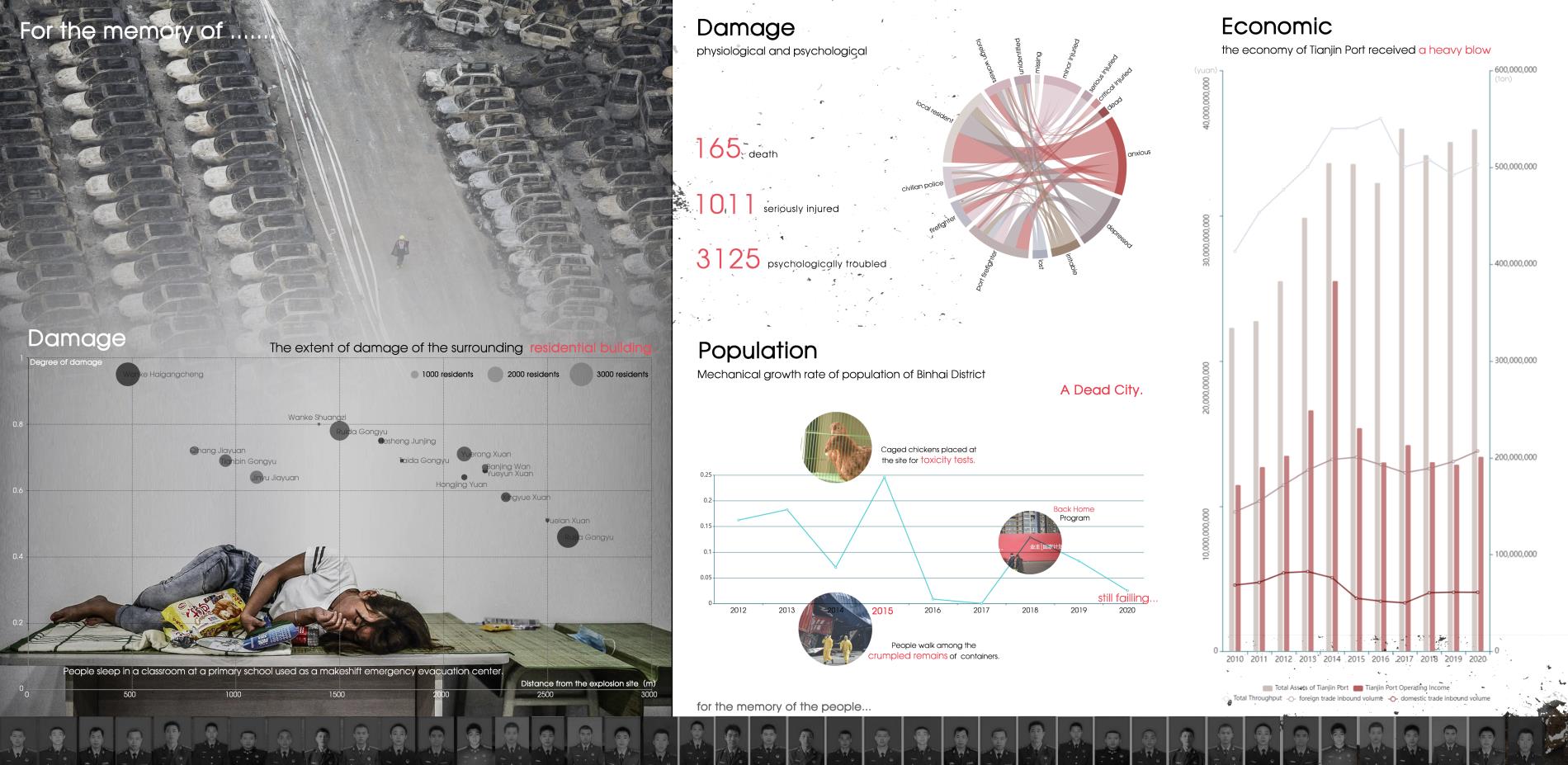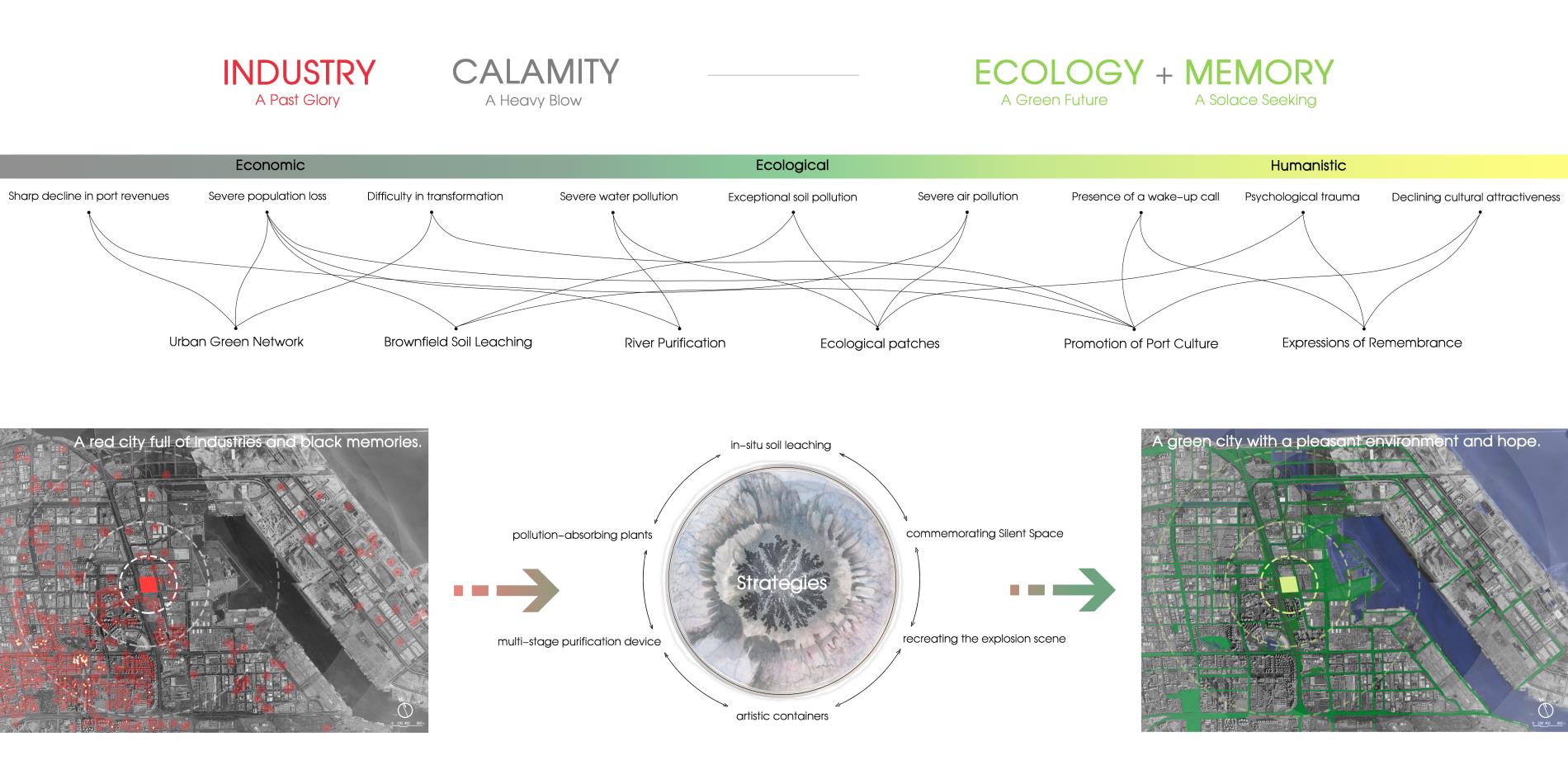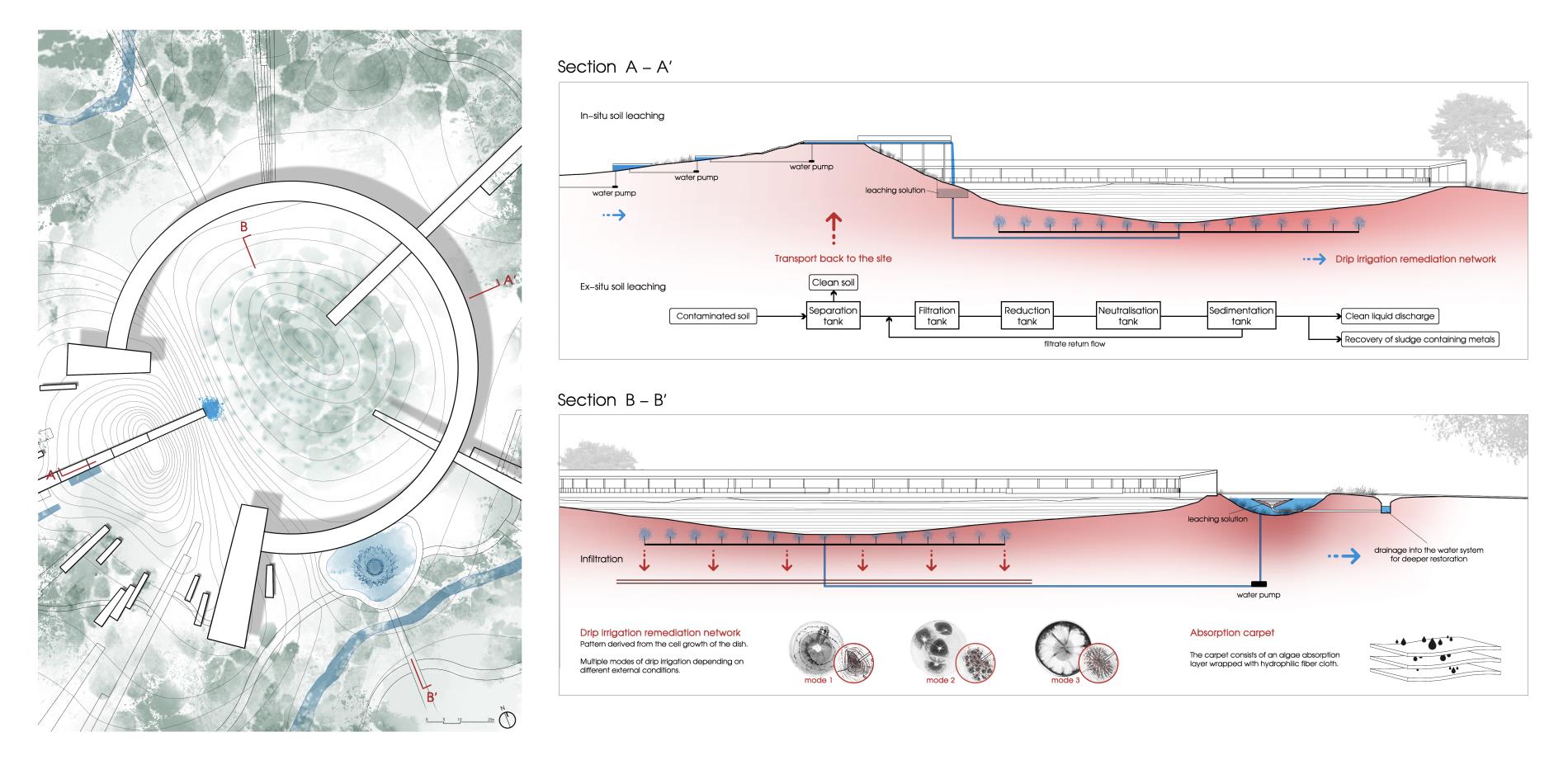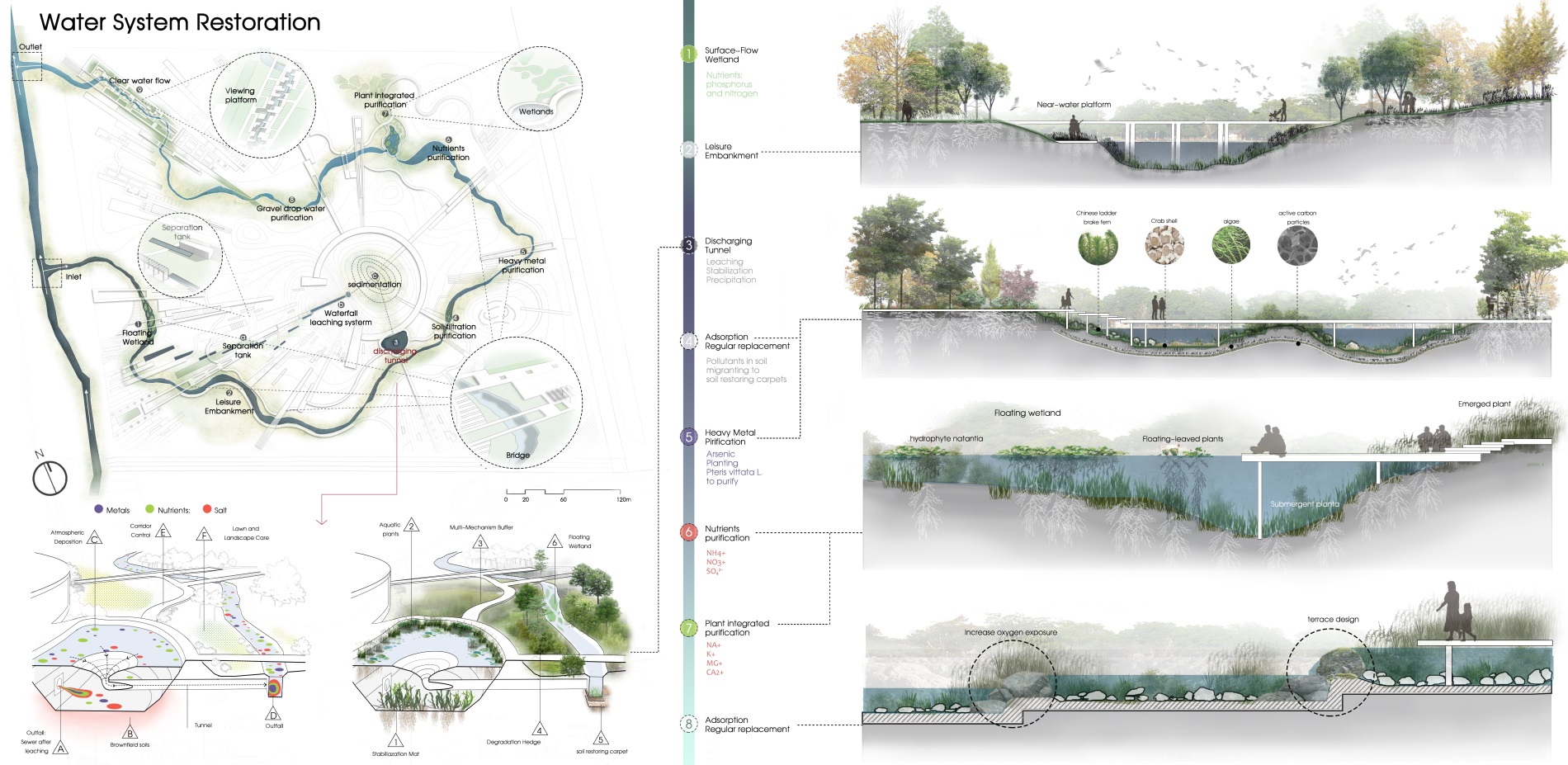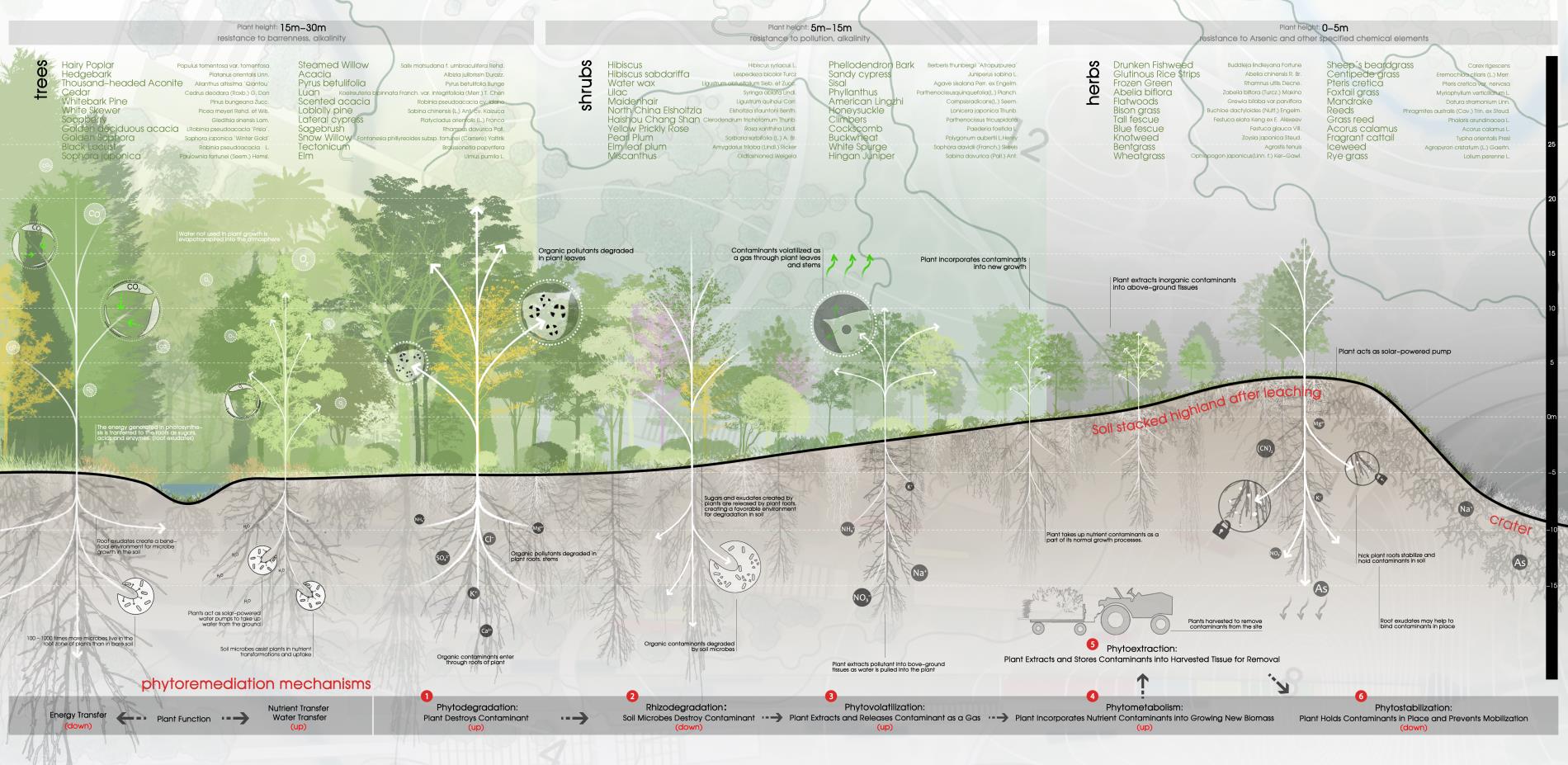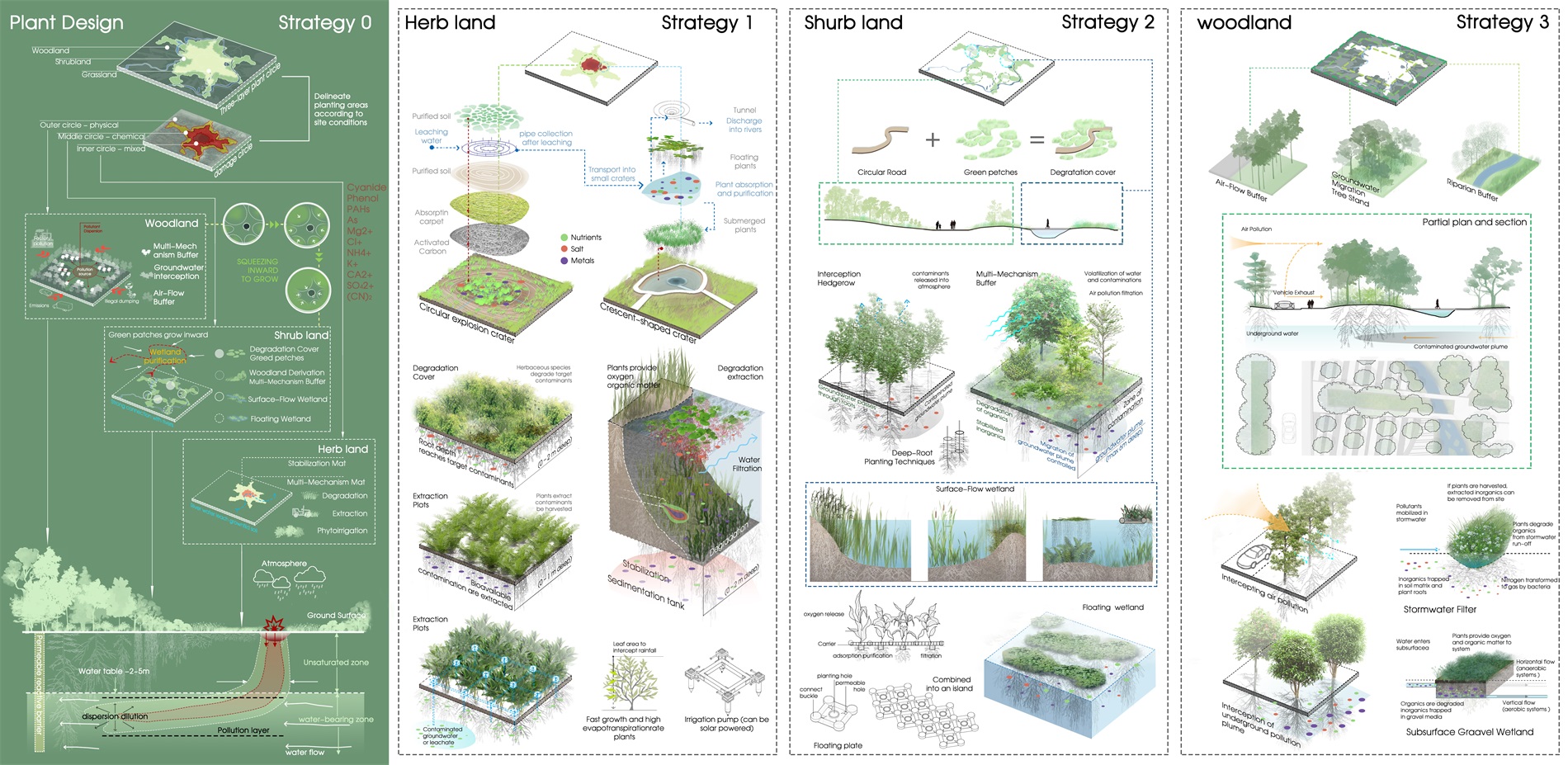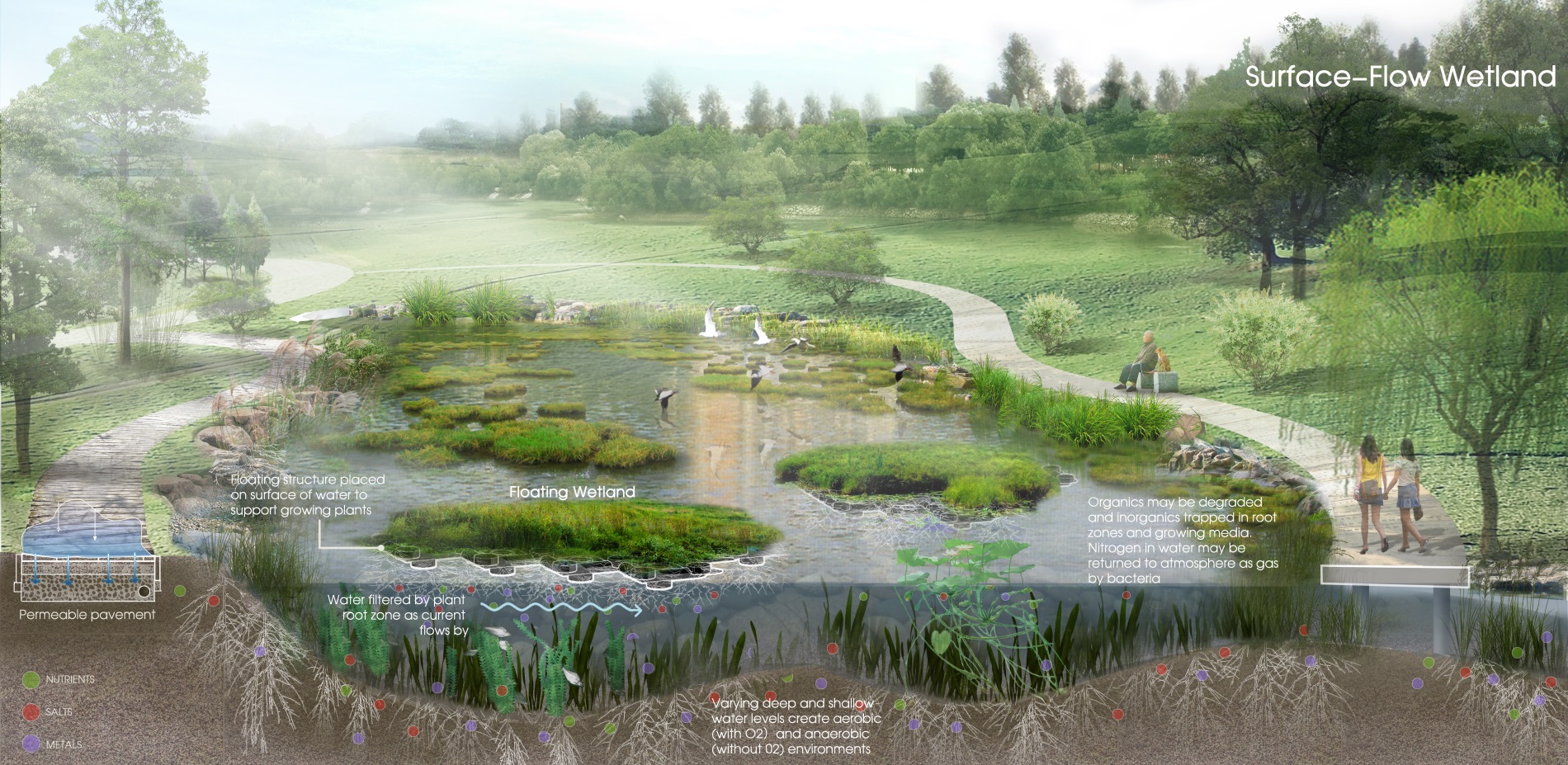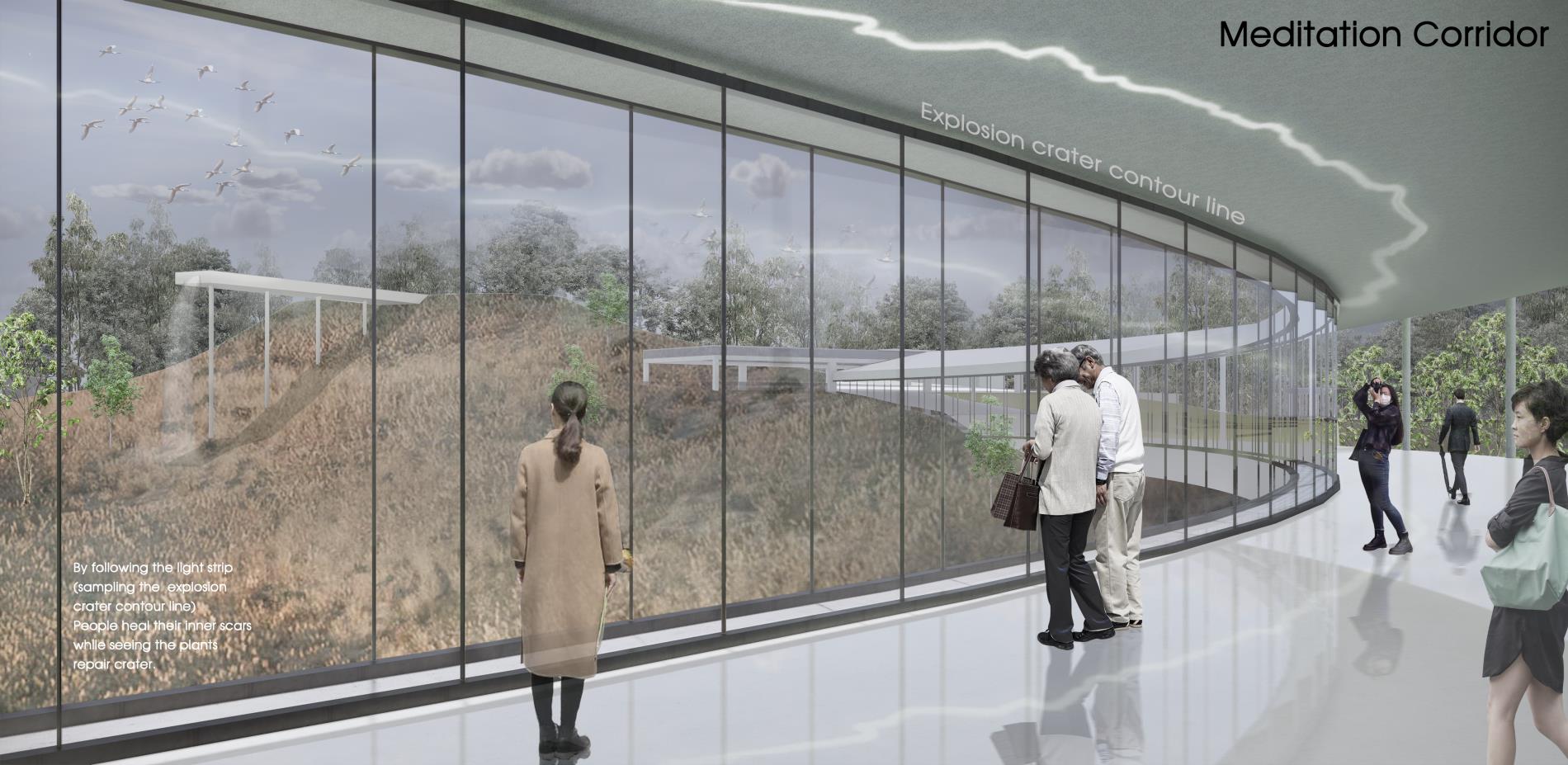Cell Growth Dish – Brownfield Landscape Ecological Restoration Design
Honor Award
General Design
Tianjin Dongjiang Free Trade Port Area, Tanggu Development Zone, Binhai New District, Tianjin, China
Zhuoran Chen, Student International ASLA;
Ke Dong, Student International ASLA;
Faculty Advisors:
Yan Wang;
Tianjin University
Just a stunning combination of research, planning, and design. It effectively describes a problem and, in detail, presents a convincing solution that exemplifies the best of student work.
- 2022 Awards Jury
Project Statement
The port of Tianjin, once the fifth largest port in the world, carried a huge volume of trade traffic. In 2015, a sudden explosion of hazardous chemicals in a warehouse shattered all prosperity. A large amount of brownfield soil from the explosion site needed to be contaminated. The loss of chemical components in the environment caused varying degrees of contamination and caused intense unease among the surrounding population. The hard-hit Tianjin citizens and firefighters desperately longed for a place to soothe their inner grief.
This proposal presents a comprehensive strategy from a multi-faceted need. Treat the explosion site as a cell growth dish. The solution concept and strategy design extracts two forces acting within the cell culture dish. The force of scattering from the center outward is used as the conceptual foothold, fitting the impact of the explosion from the center outward. The external inward extrusion growth force is used as a strategy to achieve the contamination decontamination of the site from the perspective of bioremediation.
Project Narrative
The characteristic pollutants of the atmospheric environment detected in the follow-up of this incident were hydrogen cyanide, hydrogen sulfide, ammonia and volatile organic compounds such as trichloromethane and toluene. This incident mainly caused pollution of water bodies within about 2.3 km from the explosion center perimeter. The main pollutant was cyanide. The water in the two explosion pits at the accident site was seriously polluted; the scattered chemicals and the secondary pollutants from the explosion sank into the surface water area with the surface runoff formed by firefighting water, decontamination water and rainwater, and most of them entered the surrounding underground pipe network, polluting the relevant water bodies.
Five days after the accident, the test results of the water in the explosion pit were strongly alkaline, while sulfate, trichloromethane, benzene and other pollutants were detected. Cyanide and arsenic concentrations detected at the site exceeded the standard. Two months after the accident, about 3% of sodium cyanide in different forms, as well as a small amount of chemicals and secondary contaminants that are not easily degradable, bioaccumulative and chronically toxic, still remained in the soil of the accident center area.
The explosion crater was located in the center of the site, and two successive explosions formed a large and a small explosion crater. A large circular crater with a diameter of 97m and a small crescent-shaped crater with a diameter of 15m immediately adjacent to it form a black patch in the center of the site. As the nucleus of the cell with the site as the center of the Petri dish. Everything scattered on the field that was distorted by the explosion was governed by a sense of centripetal squeeze, just as all the organisms inside the Petri dish were driven by the nucleus, taking energy from the nucleus and acting on the nucleus itself.
The force of scattering from the center outward is used as a conceptual foothold, fitting the impact of the explosion from the center outward. The external inward extrusion growth force is used as a strategy to achieve the contamination decontamination of the site from the perspective of bioremediation. The most contaminated areas of the site were drenched with soil using the chemical remediation drenching method. At the same time, the bioremediation method is used to select plants that are resistant to pollution and have the ability to adsorb pollutants for planting in groups.
The remains of the container at the site served as the skeleton of a cell culture dish. The center of the explosion scattered strong blast traces to the periphery, leaving behind white-gray dust in a radial pattern. Combined with the topography, hydrology and vegetation of the site, the surface structure of the site after the explosion was analyzed to decompose the more complete ground area, the container accumulation area, the area of water accumulation in the explosion crater, and the rest of the crumbling hardened pavement area. Combined with the aerial view of the site, the traces of the explosion are traced and its inward extrusion is deconstructed and used as the main landscape design technique and concept.
The inward extrusion and growth of the landscape in a hierarchy of circles also caters to the main theme of ecological restoration of the post-blast landscape. From the tree planting area in the outer circle, to the shrub planting area in the middle circle, and finally to the herb planting area in the inner circle centered on the explosion crater. Following the growth of the landscape and echoing the topography of the site, a basin-shaped ecological green island is created with the outer circle high and lowered inward.
Combining with the climate of Tianjin Binhai New District, the characteristics of saline soil, the anti-pollution property of plants and the reference of native plants, more than ten kinds of plants in each of the three circles of the landscape design of the site have been proportioned.Comprehensive consideration of the balance of the height of each plant, with dense and tall plants in the outer circle and low herb restoration in the inner circle. The rotation of the four seasons throughout the year, so that there is no gap in the greening of the site.
Combined with the settlement of pollution over the years and the year-by-year improvement of the bioremediation effect of the site, the planning and development of the site in the next 5, 20 and 50 years and the restoration process are envisioned to move towards the goal of a sustainable and resilient space. Plants in the form of grouped patches spread and squeeze towards the central blast pit like cell growth, eventually turning the barren soil in the blast pit into an ecological green island. The process of gradual settling and dissipation of pollution is visualized through the growth of plants, vividly demonstrating the ability of bioremediation to repair contaminated soil. Eventually the vibrant green will finally cover the "scars" produced by the explosion, and the power of biology slowly heals it all.
Plant List:
- Whitebark Pine
- Golden Sophora
- Steamed Willow
- Sophora japonica
- Pyrus betulifolia
- Scented acacia
- Loblolly pine
- Sagebrush
- Elm
- Hibiscus
- Lilac
- North China Elsholtzia
- Yellow Prickly Rose
- Phyllanthus
- Honeysuckle
- Drunken Fishweed
- Glutinous Rice Strips
- Abelia biflora
- Flatwoods
- Bison grass
- Tall fescue
- Blue fescue
- Knotweed
- Black Locust
- Bentgrass
- Wheatgrass
- Sheep's beardgrass
- Centipede grass
- Pteris cretica
- Foxtail grass
- Reeds
- Acorus calamus
- Fragrant cattail
- Frostweed
- Rye grass

